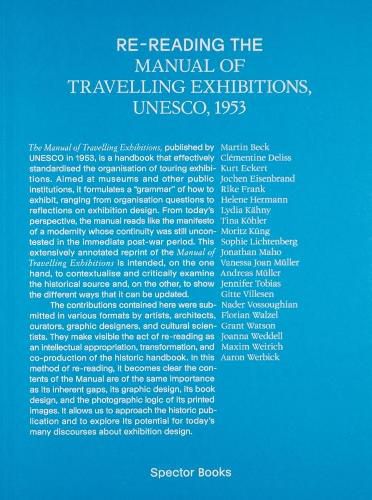Readings Newsletter
Become a Readings Member to make your shopping experience even easier.
Sign in or sign up for free!
You’re not far away from qualifying for FREE standard shipping within Australia
You’ve qualified for FREE standard shipping within Australia
The cart is loading…






The Manual of Travelling Exhibitions, published by UNESCO in 1953, was a handbook on organizing touring exhibitions. It was conceived by Elodie Courter Osborne out of her work as head of the Department for Circulating Exhibitions at The Museum of Modern Art, New York. Aiming her book at museums and other public institutions, Courter formulated a grammar of exhibitions, ranging from organizational questions to reflections on exhibition design. Re-reading the Manual of Travelling Exhibitions reproduces the page spreads of the original, annotating them in its margins and adding contemporary critical commentary. In the information the book includes (and leaves out), its design and the photographic logic of its images, the manual now reads like the manifesto of a modernity whose continuity was still unbroken in the immediate postwar period.
$9.00 standard shipping within Australia
FREE standard shipping within Australia for orders over $100.00
Express & International shipping calculated at checkout
The Manual of Travelling Exhibitions, published by UNESCO in 1953, was a handbook on organizing touring exhibitions. It was conceived by Elodie Courter Osborne out of her work as head of the Department for Circulating Exhibitions at The Museum of Modern Art, New York. Aiming her book at museums and other public institutions, Courter formulated a grammar of exhibitions, ranging from organizational questions to reflections on exhibition design. Re-reading the Manual of Travelling Exhibitions reproduces the page spreads of the original, annotating them in its margins and adding contemporary critical commentary. In the information the book includes (and leaves out), its design and the photographic logic of its images, the manual now reads like the manifesto of a modernity whose continuity was still unbroken in the immediate postwar period.